Flying high: the best TV pilots
Five writers present their pick of the best pilot episodes of all time: Breaking Bad, Pushing Daisies, Firefly, Veronica Mars, and One Tree Hill.
[divider]
Breaking Bad
The first episode or pilot of a television series must be extraordinarily difficult to write. Not only should it have a gripping premise, it has to include credible characters we want to know more about and ideally incorporate a mix of drama, humour and suspense. To entice viewers and keep them watching, the pilot should be a microcosm of the rest of the series which is yet to come, and the first episode of Breaking Bad is exactly that.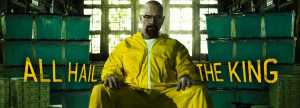 Breaking Bad opens with a scene that is hard to forget. An RV careering through the desert, driven by a man in nothing but underwear and a gas mask. If that isn’t enough, there are two (presumably dead) bodies sliding around in the RV as well as another passenger with a gas mask who seems to be unconscious. Stopping the vehicle, the driver, who we learn is the main character, Walter White, gets out and cocks his gun in the direction of approaching sirens. If that hasn’t piqued your interest and curiosity, it is unfortunate that you are not a human being. The opening scene is particularly clever because it opens how one would imagine a pilot would end. It sets the premise and serves to keep you interested for the rest of the first episode, which in turn hooks you for the rest of the series because it makes you wonder just how much worse the situation can get.
Breaking Bad opens with a scene that is hard to forget. An RV careering through the desert, driven by a man in nothing but underwear and a gas mask. If that isn’t enough, there are two (presumably dead) bodies sliding around in the RV as well as another passenger with a gas mask who seems to be unconscious. Stopping the vehicle, the driver, who we learn is the main character, Walter White, gets out and cocks his gun in the direction of approaching sirens. If that hasn’t piqued your interest and curiosity, it is unfortunate that you are not a human being. The opening scene is particularly clever because it opens how one would imagine a pilot would end. It sets the premise and serves to keep you interested for the rest of the first episode, which in turn hooks you for the rest of the series because it makes you wonder just how much worse the situation can get.
Whilst exploring dark realms of the drug trade, there is a skilful mix of black comedy and gruesome violence which makes the pilot and the series compulsively watchable. In addition to good writing are talented actors and we learn to both love and loathe Walt, we root for him and simultaneously pray for his downfall. In the first episode, Cranston plays Walt effortlessly and we are instantly rooting for this mild mannered chemistry teacher who seems hard done by.
As the episode ends, we are left eager for more. The beginning of Walt’s transformation has only just begun and we want to know how it all turns out. The end of the pilot also leaves quite a few loose ends that won’t be easy to tie up, therefore leaving us intrigued, much like the start of the episode. It takes five seasons until we can feel fully satisfied and yet, the pilot episode is arguably the best because it incorporates all aspects of the complete series into just under an hour. Watching it will be an hour well spent, that much is certain. Although, after watching the first episode there’s no doubt you’ll be speeding through the rest of the series until you’ve finished, so it isn’t recommended around exam season.
Karishma Jobanputra
[divider]
Pushing Daisies
A television pilot is like the display in a shop window: it should attract potential customers whilst simultaneously communicating a clear indication of what’s to come. More basically, it also needs to establish story, characters and relationships, as well as communicating tone and setting. The pilot for Pushing Daisies fulfills all these functions, but what’s more, it managed to do so in an effortlessly entertaining way.
There is a lot of television being produced on the other side of the pond – much of it good, but even more of it bland and generic. In every aspect of production, Pushing Daisies refuses to play it safe. Instead, from the first moment of screen time everything – from the unique concept to the witty script and the stylised production design – commits to being different from traditional styles of television making.
A strange but wonderful blend of fairy tales, murder mysteries and romance, Pushing Daisies concerns a pie-maker named Ned (Lee Pace) with a magical gift. With one touch, he can bring the dead back to life. But, as with all things, there’s a catch: more than a minute and something else has to die. Ned’s gift (or, as the audience soon discovers, potential curse) is utilised by an unscrupulous cop to help solve murder mysteries, and gives Ned the opportunity to reconnect with his childhood sweetheart (the effervescent Anna Friel).
With self-conscious quirk in abundance and a deft blend of the magical with the mundane, the pilot of Pushing Daisies is a great stand-alone watch, as well as making you desperate to find out what happens to the characters next. The concept is wholly (and designedly) bizarre, but the pilot is carefully handled to prevent it from becoming too alienating for the viewer. It doesn’t hurt that it’s a treat to watch, with fantastic actors and gorgeous costumes and sets which give the show its own unique style.
The Pushing Daisies pilot celebrates the power of love in an uplifting manner which is in no way saccharine, and even in the short space of forty minutes manages to make you truly empathise with and root for its main characters. The pilot was different without being contrived, and established many of the stylistic eccentricities (like voice overs, bright colours and heightened characters) which made the show so memorable.
If you’ve never seen Pushing Daisies, then you should definitely take up with it now. It’s a refreshingly joyful blend of humour, romance and fantasy, and I can almost guarantee that you’ll never see something quite like it before or since.
Emily Nabney
[divider]
Firefly
Cowboys. In space. Interested yet?
A pilot episode can make or break a high-concept series, and the job of introducing the history of the Firefly universe is certainly a tricky one. The series follows the crew of Serenity, a Firefly- class spaceship, as they struggle to make a living through smuggling on the fringes of space in the aftermath of a failed civil war. Pitched as “nine people looking into the blackness of space and seeing nine different things,” the Firefly pilot is a rare example of an ensemble cast with chemistry from the very first episode.
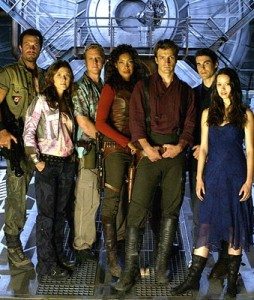 The show’s heart comes from the mismatched group of perennial underdogs that are thrown together to try and form some kind of a future for themselves- two former rebel fighters turned smugglers/professional bad asses; a sarcastic pilot; a boorish mercenary; a sweet-hearted mechanic; an upper class sex worker; a doctor turned criminal; his dangerous prodigy of a sister; and a priest with a shady past. The pilot establishes the relationships between the crew with ease,highlighting the romantic tension between Mal & Inara and Kaylee & Simon at the same time as setting up the mistrust between Mal and- well, pretty much everyone other than Zoe and Kaylee.
The show’s heart comes from the mismatched group of perennial underdogs that are thrown together to try and form some kind of a future for themselves- two former rebel fighters turned smugglers/professional bad asses; a sarcastic pilot; a boorish mercenary; a sweet-hearted mechanic; an upper class sex worker; a doctor turned criminal; his dangerous prodigy of a sister; and a priest with a shady past. The pilot establishes the relationships between the crew with ease,highlighting the romantic tension between Mal & Inara and Kaylee & Simon at the same time as setting up the mistrust between Mal and- well, pretty much everyone other than Zoe and Kaylee.
Moreover, the pilot is a masterpiece in world building- it shows you the hallmarks of the world the characters inhabit without dumping information on you. The aftermath of the Unification war, the class differences between the Rim planets and the Core worlds, the American/East Asian cultural fusion, and the threat of savage Reaver ships all become major plot points in later episodes.
Thematically, the Firefly pilot provides debate on political and social issues that persist five hundred years into the future. Mal, Serenity’s captain, is a Libertarian hero and definitely seen sympathetically in contrast to the authoritarianism of the Alliance, most notably demonstrated in River’s unfortunate past. However, his beliefs contrast with the reality of the anarchic Rim worlds, and the prosperity of the Alliance planets. The libertarian debate is just one interesting theme that the pilot establishes- the idea of the creation of family is one that persists throughout Joss Whedon’s work, and the eclectic, makeshift clan of Serenity are already becoming close by the end of the episode.
The pilot’s charm, therefore, is in its establishment of the world, characters, and themes that helped make Firefly a cult show. It’s funny, eminently quotable (“Curse your sudden but inevitable betrayal!”), and heart-warming. Firefly was infamously cancelled by Fox before the first season had even ended, but its loyal following granted it a movie, Serenity, that gives the series some closure.
Firefly was a short but sweet series, with an exemplary pilot episode.
Bethan Ackerley
[divider]
Veronica Mars
It’s been ten years since Veronica Mars started snooping around our screens. The first episode covers so much ground in such razor sharp fashion that it leaves you wondering how it didn’t last longer than its (too short) three season run.
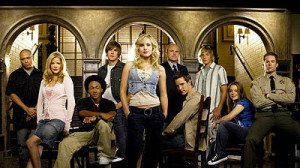 Veronica Mars is the story of a cynical private eye, poured straight out of a classic film-noir mould. In fact, much of the show’s visual identity is drawn from noir. Offices are snooped around in, lit in that eery window-blind chiaroscuro way, and as shadowy haunts are staked out, the only illumination stems from the neon signs of fleabag motels. Sure, it’s noir- but not as we know it.
Veronica Mars is the story of a cynical private eye, poured straight out of a classic film-noir mould. In fact, much of the show’s visual identity is drawn from noir. Offices are snooped around in, lit in that eery window-blind chiaroscuro way, and as shadowy haunts are staked out, the only illumination stems from the neon signs of fleabag motels. Sure, it’s noir- but not as we know it.
The main twist to the genre comes by the fact that Veronica is a 15 year old school girl. Whilst she spends her nights helping her P.I. Father (Enrico Colantoni) (the father-daughter relationship is consistently a highpoint) investigate the seedy underbelly of Neptune, she spends her days navigating the hallways of Neptune High. Think Humphrey Bogart, but desperately wanting a pony for Christmas.
Whilst thoughts of “high-school” might leave you imagining some kind of Nancy Drew knock-off, what’s really surprising, is that the show’s not afraid to open with some decidedly dark plot lines. For starters, there’s the murder of Veronica’s best friend Lily (Amanda Seyfried) – the death of a young girl in a small town evoking memories of Twin Peaks. Then there’s Veronica’s investigation into her own rape, and amongst other various strands of the web, are social dislocations, in an area without a middle class, that border on full scale class warfare. Sure, there’s a lot going on early doors, but this is just the series’ way of showing it isn’t afraid to tackle high-quality, challenging, complex story telling.
What the pilot is really good at is showcasing the talents of Kristen Bell. Bell keeps the show ticking with captivating voiceovers that could well be lifted straight from the mouth of Phillip Marlowe, if they weren’t so dripping in sass. Quick with a quip, comparisons with Buffy are undoubtedly unavoidable. However, Veronica seems deeper and more sympathetic than her vampire-slaying counterpart. She isn’t a chosen one either, making her rely on her street smarts. This grounds her, making her more relatable and appealing as a lead.
However, what stands out most from the episode is that you instantly know it’s not going to take half a season of fumbling around before Veronica Mars finds its identity. It’s reassuring to see a show so comfortable in its own skin. Without the need for soul-searching, time is freed up to actually address the naturally intriguing story lines, and rewards the creators for putting faith in its dialogue; as well as the wit and charm of its lead.
Sam Russell
[divider]
One Tree Hill
Pilot episodes are a television shows one opportunity to impress. To impress the network and audiences and to layout what the show is about and showcase potential. The pilot episode of One Tree Hill does exactly this and more.
The show centers on Lucas (Chad Michael Murray) and Nathan Scott (James Lafferty), two half-brothers who have little in common apart from a love for basketball. Creator Mark Schwahn said that One Tree Hill was like “Cain and Abel on a high school basketball team” with the arrogant Nathan seeming the polar opposite to Lucas who is brooding and more reserved. A love triangle also quickly forms with Nathan’s girlfriend Peyton (Hilarie Burton) sharing undeniable chemistry with Lucas.
 The true source of the brother’s rivalry is deeply rooted in how Nathan leads a life of privilege whereas Lucas was never given a chance as he was abandoned by their father, Dan Scott (Paul Johansson). This conflict is omnipresent in the pilot. The additional adult characters of his brother Keith (Craig Sheffer) and Lucas and Nathan’s respective mothers Karen (Moira Kelly) and Deb (Barbara Alyn Woods) are thus seen to have almost more drama than their teenage counterparts. However, what the pilot sets out is, that despite the lack of maturity gap, the groups are driven by very different emotions, for the teens its love, for the adults’ revenge.
The true source of the brother’s rivalry is deeply rooted in how Nathan leads a life of privilege whereas Lucas was never given a chance as he was abandoned by their father, Dan Scott (Paul Johansson). This conflict is omnipresent in the pilot. The additional adult characters of his brother Keith (Craig Sheffer) and Lucas and Nathan’s respective mothers Karen (Moira Kelly) and Deb (Barbara Alyn Woods) are thus seen to have almost more drama than their teenage counterparts. However, what the pilot sets out is, that despite the lack of maturity gap, the groups are driven by very different emotions, for the teens its love, for the adults’ revenge.
Airing just months after Dawsons Creek ended, the two shows share many similarities in themes, characters, storylines, and location since both were filmed in North Carolina. What sets One Tree Hill apart is two things: music and sport. Both are embedded in the shows core with these elements being constant throughout. Moreover, they are skilfully employed to draw direct parallels between the brothers. Unlike many shows that select well known songs, One Tree Hill features lesser known artists such as Dashboard Confessional and Finch – again setting it apart from teen shows such as the O.C.
With basketball being a key plot source, there seemed a slight danger of predictability but OTH avoids a formulaic plot setup by heightening the action and suspense in the pivotal final scene on the Rivercourt – which becomes a crucial location. The closing montage with Lucas’ voiceover of Shakespeare’s “there is a tide in the affairs of men…” – which featured earlier in the pilot – adds yet another layer to One Tree Hill with literature attaching a sense of heart and morality.
The pilot sets extremely strong foundations for the show that went on to span nine seasons introducing the main characters, providing sufficient backstory as well as hinting at the future plot avenues of rivalry and relationships. The pilot episode, with its blend of wit, art, romance, and suspense, does what an excellent pilot should, encapsulate the heart and soul of the show.
Eleanor Campbell
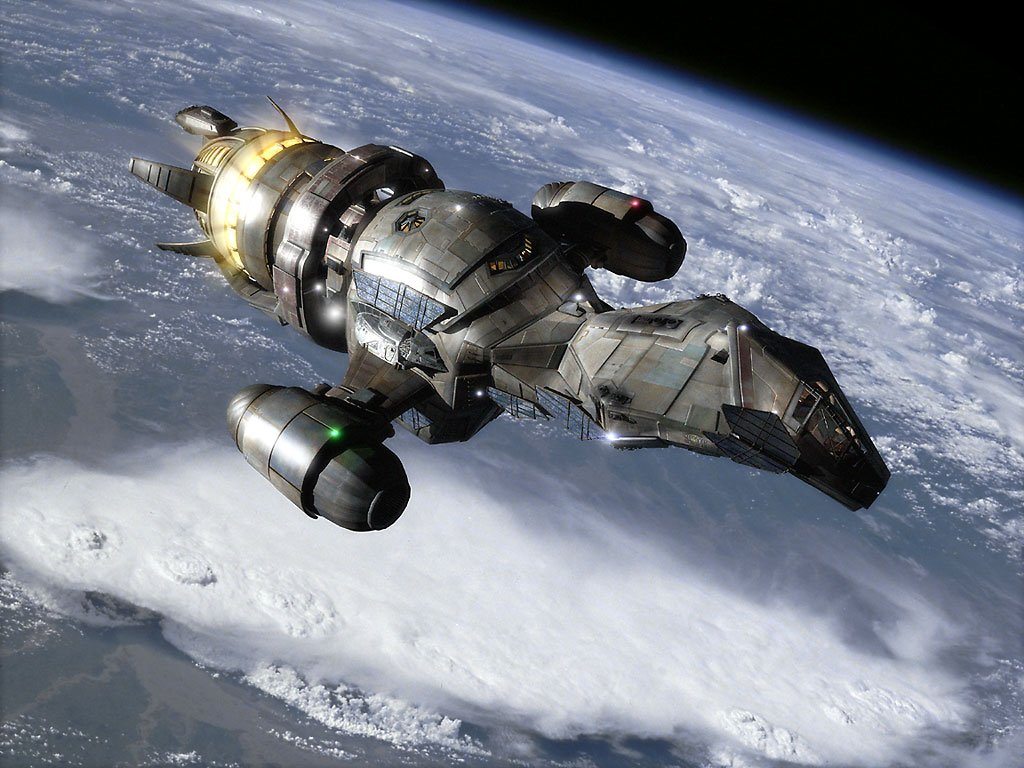
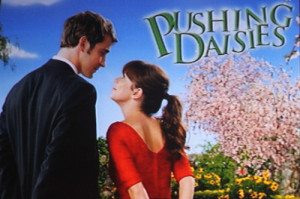
Comments